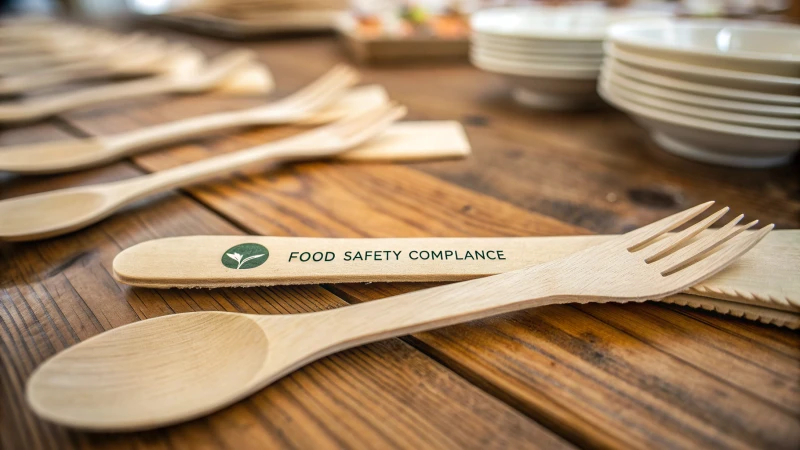
Imagine you're at a bustling outdoor event, and you're handed a sleek wooden fork. You feel good about this eco-friendly choice, but ever wonder how these utensils stay safe?
To ensure disposable wooden cutlery meets food contact safety standards, manufacturers must rigorously follow regulatory guidelines, conduct tests for contaminants, and maintain detailed records. This process is essential for product safety and legal compliance.
Navigating these standards feels like piecing together a puzzle. I remember the first time I delved into these requirements—it was a maze of tests and documentation. Yet, each step, from selecting materials to final testing, is crucial. Understanding this journey not only safeguards consumer trust but also elevates our commitment to quality. Let's explore each critical step in detail.
Manufacturers must test wooden cutlery for contaminants.True
Testing ensures that the cutlery is safe for food contact, meeting regulatory standards.
Documentation is unnecessary for compliance with safety standards.False
Maintaining comprehensive documentation is crucial to demonstrate adherence to safety regulations.
What Are the Key Regulations for Food Contact Safety?
Navigating food contact safety regulations can feel like solving a complex puzzle, but it's essential for ensuring consumer protection and business compliance.
Key regulations for food contact safety revolve around guidelines from bodies like the FDA in the U.S. and EFSA in Europe, requiring rigorous testing and documentation to prevent harmful substances from reaching consumers.
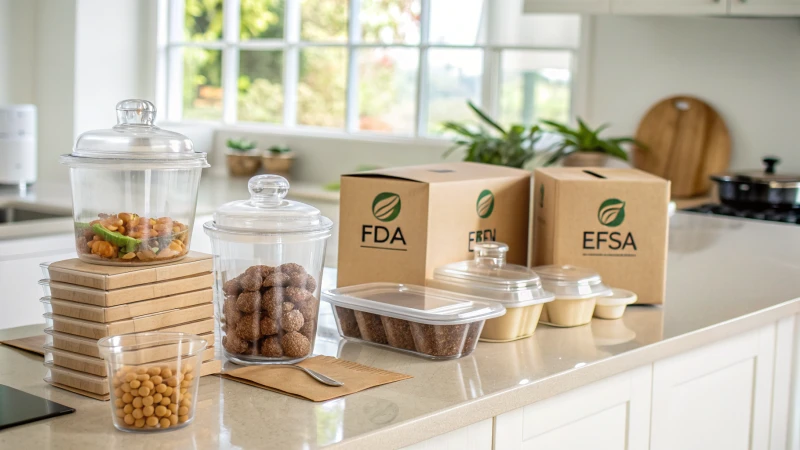
Understanding Global Regulatory Bodies
I remember when I first dove into the world of food contact safety. It felt like entering an intricate maze, each turn representing a different country's rules and regulations. In the U.S., the Food and Drug Administration1 (FDA) sets the standards. They require that any material touching our food meets specific safety criteria, which initially felt overwhelming to understand. But once I got the hang of it, it was like learning a new language—suddenly, things started making sense.
Across the pond, the European Union relies on the European Food Safety Authority2 (EFSA). Their approach is holistic, covering everything from chemical migration into food to environmental impact. It reminded me of planning a comprehensive event, where every detail matters to ensure nothing falls through the cracks.
Testing Requirements and Standards
When it comes to testing, I’ve always thought of it as detective work—uncovering the truth hidden in materials. Regulations demand thorough testing to ensure materials are safe for food contact. I once visited a lab where they tested for heavy metals and VOCs; it was fascinating to see science in action, confirming that what touches our food is safe.
Table: Common Tests for Food Contact Materials
| Test Type | Purpose |
|---|---|
| Heavy Metals Analysis | Detects toxic elements like lead |
| VOCs Testing | Measures chemical emissions |
| Migration Testing | Ensures no transfer of substances |
Traceability and Documentation
Keeping track of where everything comes from—traceability—has always been like piecing together a giant jigsaw puzzle. Technologies like blockchain3 make it easier to maintain transparent records of supply chains. This transparency isn’t just a regulatory requirement; it's a way to build trust with customers.
Documentation is another layer of this intricate process. Ensuring all materials meet regulatory criteria is akin to maintaining an organized wardrobe—everything has its place and purpose.
Importance of Material Safety and Compliance
Following these regulations isn’t just about avoiding fines; it's about protecting people. When I think about ensuring all materials are safe for food contact, it's like putting up a safety net for consumers. It’s vital to stay informed about international guidelines and national standards. For those of us in sustainability or procurement, like my colleague Sarah in Australia, it’s about enhancing our brand's reputation and customer trust by ensuring compliance with every spoon and fork we source.
The FDA oversees food contact safety in the U.S.True
The FDA ensures materials for food contact meet safety standards.
EU regulations do not require migration testing for food contact.False
EU guidelines include migration testing to prevent substance transfer.
How Do Testing Protocols Ensure Cutlery Safety?
Ever wondered about the journey your wooden fork takes before it lands on your dinner table?
Testing protocols ensure cutlery safety by conducting chemical analyses to detect harmful substances, assessing durability under extreme conditions, and verifying traceability through blockchain technology. These tests ensure compliance with global safety standards, safeguarding consumer health.
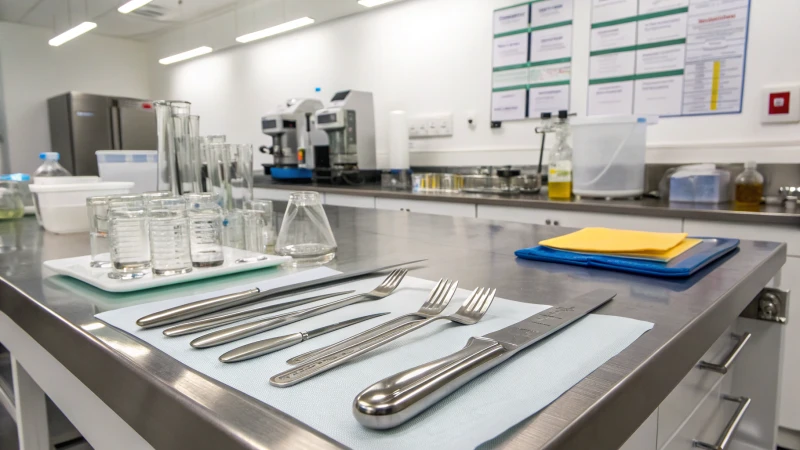
Chemical Analysis for Harmful Substances
I remember the first time I truly understood the complexity of ensuring cutlery safety—it was during a visit to a state-of-the-art testing lab. There, experts wielded sophisticated tools like ICP-MS4 and GC-MS5 with precision, akin to scientists in a sci-fi movie. They were hunting for invisible foes—heavy metals and volatile organic compounds—that could silently compromise our health. It was fascinating to see how they could detect impurities at levels as low as 0.1 parts per billion, a testament to the rigorous standards our cutlery must meet.
Durability Assessments
Reflecting on family barbecues, where cutlery endures hot grills and acidic marinades, I realized why durability testing is crucial. Our utensils are subjected to conditions simulating the harshest environments—think scorching heat or acidic sauces—ensuring they don't release harmful chemicals into our food. It's reassuring to know that these assessments protect not just the integrity of the product, but also our health and the longevity of what we use every day.
Traceability with Blockchain Technology
In today's world, transparency is key. Imagine being able to trace the entire journey of your cutlery—from its production site to your dining table. That's where blockchain technology comes in. It offers an unbroken chain of information, ensuring every fork and knife is certified safe and sustainable. This traceability not only builds trust but also empowers us as consumers, giving us peace of mind with every purchase.
| Testing Method | Purpose | Technology Used |
|---|---|---|
| Chemical Analysis | Detect harmful substances | ICP-MS, GC-MS |
| Durability Tests | Ensure non-leaching properties | Extreme condition testing |
| Blockchain Traceability | Verify product history and certifications | Blockchain systems |
Meeting Global Standards
Navigating through international standards can feel like an intricate dance between compliance and creativity. As cutlery manufacturers, we adhere to rigorous guidelines set by ISO, FDA, and EU regulations. This commitment ensures that when you choose our products, you're choosing safety and quality that transcend borders. In doing so, we not only protect consumer health but also solidify trust in brands dedicated to eco-friendliness and sustainability.
ICP-MS detects harmful substances in cutlery.True
ICP-MS is used to detect heavy metals with high precision.
Blockchain technology cannot trace cutlery production.False
Blockchain provides full traceability from production to purchase.
Why is documentation essential for compliance?
Have you ever wondered why some businesses seem to thrive while others struggle just to stay afloat? It often comes down to one critical aspect: compliance documentation.
Documentation is crucial for compliance as it offers a clear record of regulatory adherence, supports audits, and upholds organizational integrity by ensuring consistent policy implementation.
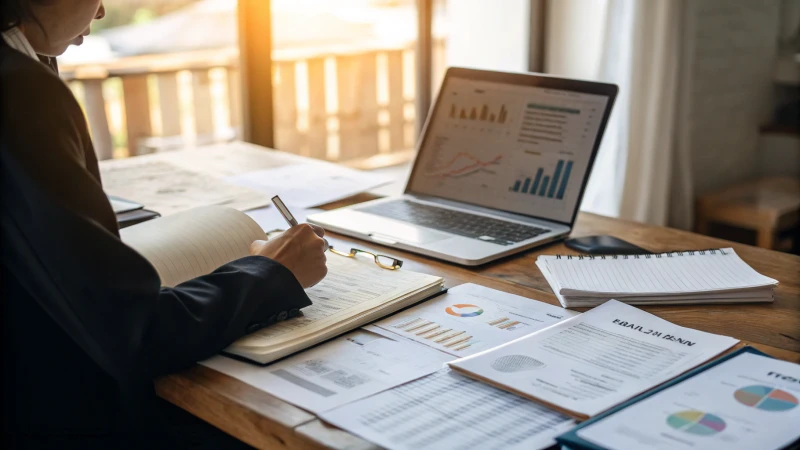
The Role of Documentation in Regulatory Adherence
Let me take you back to a time when I worked closely with a healthcare provider. It was during an audit that I realized just how invaluable documentation can be. Every piece of paperwork was a testament to our adherence to regulations, from the sterilization records of medical equipment to patient care logs. Without these detailed documents, proving compliance would have been a nightmare. They served as our legal safeguard6, ensuring we met every necessary regulation and, more importantly, that our patients were safe.
Supporting Audits with Documentation
Think of an audit as a spotlight shining on your organization. It reveals everything, the good and the not-so-good. This was particularly evident when I collaborated with a food industry client. We meticulously documented every detail—from where ingredients were sourced to how they were tested for safety. When audit time came, those records were our saving grace, clearly demonstrating that we met all regulatory standards. In the food industry7, such detailed documentation isn't just helpful; it's essential.
| Audit Aspect | Documentation Needed |
|---|---|
| Ingredient Sourcing | Supplier Records |
| Safety Testing | Lab Test Results |
| Compliance Verification | Audit Reports |
Ensuring Consistent Policy Implementation
There's something reassuring about knowing everyone is on the same page. In one of my previous roles in construction, we faced a massive project where safety protocols were non-negotiable. Proper documentation ensured every worker knew exactly what was expected and followed the guidelines without deviation. This wasn't just about ticking boxes; it was about protecting lives and maintaining quality.
Enhancing Organizational Integrity
Beyond just meeting regulations, I've seen how documentation can elevate an organization's reputation. It fosters transparency and accountability, which are vital, especially for public-sector organizations8 committed to ethical practices. When policies are documented, they create a culture of trust and integrity, ensuring everyone from top to bottom understands and upholds the same standards.
Facilitating Certifications and Accreditations
When I helped a business pursue ISO certification, the sheer volume of required documentation was daunting. Yet, it was this very documentation that showcased our processes and dedication to international standards. Without it, obtaining such certifications would have been impossible. Detailed records were not just necessary; they were a testament to our commitment to excellence.
Adapting to Industry Changes
The world never stands still, and neither do regulations. I’ve learned that comprehensive documentation makes adapting to changes much smoother. During a particularly challenging regulatory shift, maintaining up-to-date records allowed us to pivot quickly and align with new requirements with minimal disruption. It's about staying ahead of the curve and ensuring continued compliance without missing a beat.
Documentation is crucial for passing audits.True
Detailed documentation helps auditors verify regulatory compliance.
Compliance documentation is optional in healthcare.False
Healthcare requires documentation to ensure safety and regulatory adherence.
How Does Sustainability Enhance Compliance?
Ever wondered how going green can help your business stay on the right side of the law? Let’s explore this fascinating connection.
Sustainability is pivotal in compliance by aligning business operations with eco-friendly standards, reducing risks, cutting costs, and boosting brand image.
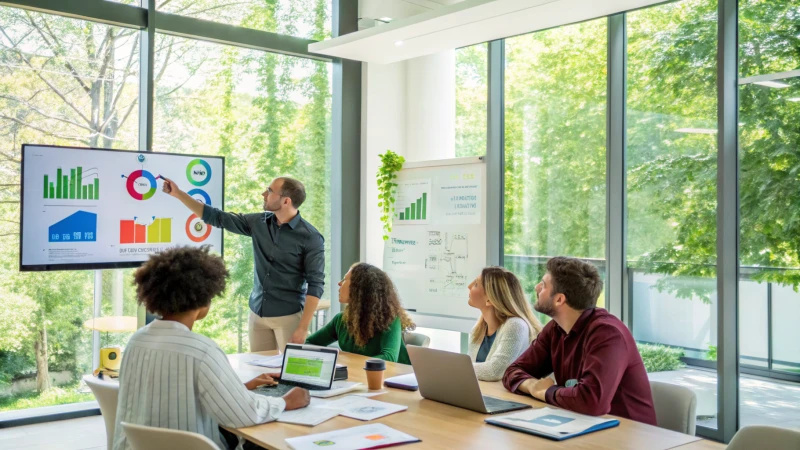
The Intersection of Sustainability and Compliance
I remember when I first realized that compliance wasn't just about ticking boxes for regulations. It struck me during a meeting where we discussed our company's environmental goals. It was as if the pieces of a puzzle suddenly fell into place — sustainability and compliance are deeply intertwined, not separate paths. This alignment is more than just a trend; it's a necessary evolution that customers, stakeholders, and even employees now expect.
Benefits of Integrating Sustainability
- Risk Reduction: I’ve seen firsthand how sustainable practices can shield businesses from unforeseen challenges. For example, companies that ensure their supply chains are sustainable9 often face fewer disruptions due to resource scarcity or regulatory changes.
- Cost Efficiency: Sustainable operations aren't just good for the planet; they’re good for the bottom line. Efficient resource use, reduced waste, and energy conservation can significantly cut costs — something that has been a pleasant surprise in my own experience.
Compliance Through Sustainable Practices
- Regulatory Compliance: It’s fascinating to see how many regulations are now incorporating sustainability metrics. By adopting eco-friendly practices early on, I found it much easier to navigate new laws and requirements.
- Enhanced Brand Reputation: Going beyond compliance to meet or exceed sustainability standards doesn’t just keep regulators happy; it also builds trust with customers and investors who care about responsible business practices.
| Aspect | Traditional Compliance | Sustainability Integration |
|---|---|---|
| Focus | Legal adherence | Eco-friendly practices |
| Approach | Reactive | Proactive |
| Outcome | Avoid penalties | Build brand trust |
Case Studies and Examples
One story that stands out to me is that of XYZ Corporation. They managed to reduce their carbon footprint by shifting to green logistics10. This move not only helped them meet emission standards but also trimmed transportation costs by 15%. Such examples reinforce the idea that sustainability is not just an ethical choice but a strategic one.
Moreover, companies investing in renewable energy sources are finding it easier to stay compliant. They also enjoy benefits like tax breaks and grants — perks that make the transition towards sustainable practices even more appealing.
By truly understanding the role sustainability plays in compliance, I've learned how businesses can strategically align11 their operations for long-term success. It's about ensuring that we not only meet current regulations but also anticipate future global standards.
Sustainability reduces compliance costs.True
Sustainable practices lead to efficient resource use, reducing overall costs.
Sustainability is unrelated to regulatory compliance.False
Many regulations now include sustainability metrics, linking the two closely.
Conclusion
Manufacturers of disposable wooden cutlery must adhere to strict food contact safety standards through rigorous testing, documentation, and compliance with global regulations to ensure consumer health and trust.
-
Learn about the FDA's specific requirements for food contact materials, ensuring compliance and safety. ↩
-
Discover EFSA's comprehensive guidelines on evaluating risks in food packaging. ↩
-
Explore how blockchain enhances transparency and traceability in the food industry. ↩
-
Understanding ICP-MS will help you appreciate how precise and reliable it is in detecting trace elements in materials. ↩
-
Explore how GC-MS identifies contaminants, ensuring cutlery is free from harmful substances. ↩
-
Explore how documentation acts as a safeguard in healthcare compliance, providing essential records for patient safety. ↩
-
Learn about the critical role of documentation in food safety audits, ensuring regulatory compliance through detailed records. ↩
-
Discover how public-sector organizations use documentation to uphold transparency and ethical practices. ↩
-
Learn how sustainable supply chains reduce risks and costs while enhancing efficiency and resilience in business operations. ↩
-
Discover how green logistics reduce emissions, cut costs, and facilitate compliance with environmental regulations. ↩
-
Understand strategic approaches for integrating sustainability into business operations for compliance and long-term success. ↩

